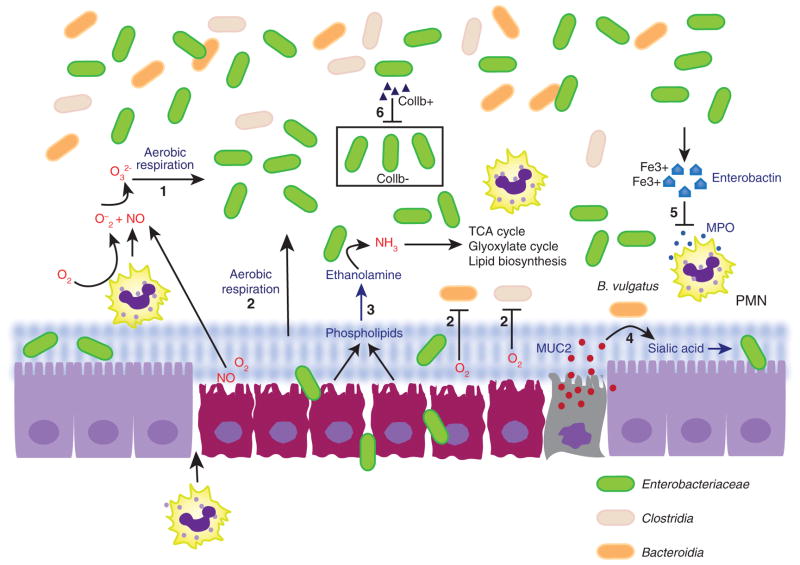Figure 1.
Mechanisms of inflammation-driven blooms of Enterobacteriaceae in the gut. (1) Superoxide radicals and nitric oxide react to give rise to nitrate (NO3−), which can be reduced by nitrate reductase-expressing Enterobacteriaceae in anaerobic nitrate respiration. (2) Higher levels of oxygen in the inflamed gut permit aerobic respiration by Enterobacteriaceae, while inhibiting growth of obligate anaerobes Bacteroidia and Clostridia. (3) Phospholipids from dying epithelial cells are broken down to give rise to ethanolamine, which is converted to ammonia that can be utilized in tricarboxylic acid cycle, glyoxylate cycle and lipid biosynthesis. (4) The release of sialic acid from MUC2 is mediated by cecal sialidase activity from Bacteroides vulgatus, and Enterobacteriaceae can take up sialic acid for synthesis of bacterial capsule and lipooligosaccharides. (5) Bacterial siderophore Enterobactin released by Escherichia coli inhibits the bacteriocidal effect of myeloperoxidase from neutrophils. (6) Colicin Ib (Collb)-expressing Enterobacterial species kill closely related but Collb-sensitive Enterobacterial species by releasing Collb, which forms pores in Collb-sensitive bacteria and disrupts cell wall synthesis.

